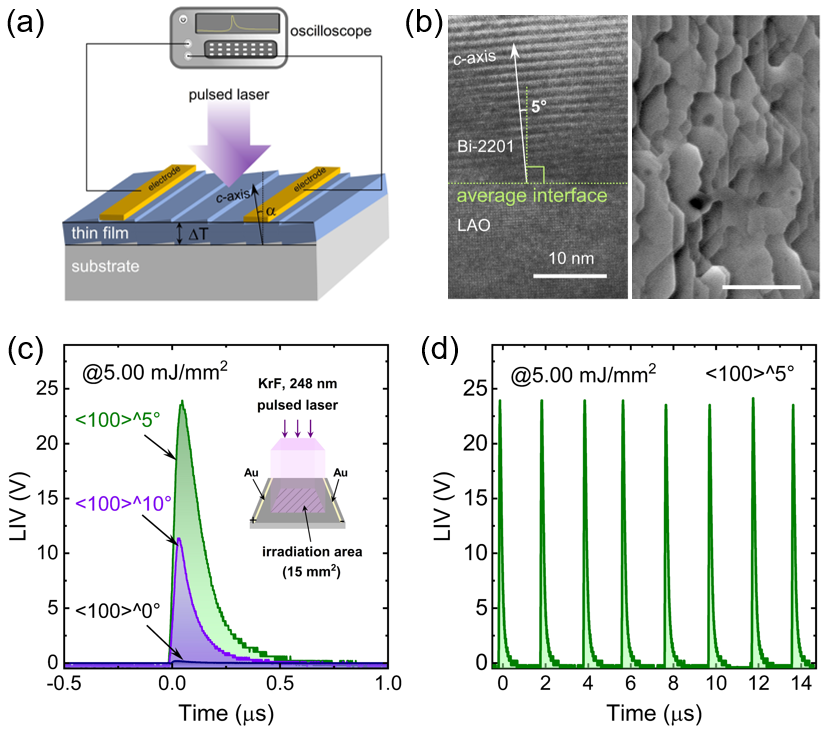
Recently, a research group led by Prof. ZHU Xuebin from Hefei Institutes of Physical Science (HFIPS), Chinese Academy of Sciences (CAS) has made a novel functional heterostructure for pulsed laser energy detection.
The related research findings were published in Applied Physics Letters.
Anisotropic thermoelectric materials are materials that have different thermoelectric Seebeck coefficients in the in-plane and out-of-plane directions in crystallography. By utilizing transient thermal effects generated by pulsed lasers, laser energy detection devices have been designed for accurate measurements of pulse laser energy density.
In this study, researchers discovered that superconducting Bi2Sr2CuOy (Bi-2201) thin films could grow on perovskite-type single crystal substrates when they were twisted at a 45-degree angle. By adjusting the tilt angles of lanthanum aluminate single crystal substrates, they successfully grew corresponding Bi-2201 thin films.
"The development of thin film epitaxial growth technology, expecially through spin-coating techniques, aided in construction of such specific heterojunctions," said WEI Renhuan, member of the team.
These thin films were used to make prototype pulse laser energy detectors. Pulsed laser irradiation causes temperature gradient ΔT between the surface and interface, resulting in a pulse voltage signal. The study found that Bi-2201 thin films tilted at a certain angle responded to ultraviolet pulsed lasers with peak voltages of up to a high voltage and a quick response time.
Researchers also established an empirical formula for these devices, enabling direct measurement of pulse laser energy density by reading the voltage output. Extensive testing demonstrated the stability of the prototype device under repeated pulsed laser irradiation.
This breakthrough provides a solid experimental basis for the future design of pulse laser energy detection devices.

Schematic diagram (a), surface and cross-sectional microstructures (b), laser-induced voltage performance (c), and prototype device stability (d) for the pulsed laser detection heterostructure. (Image by WEI Renhuai)